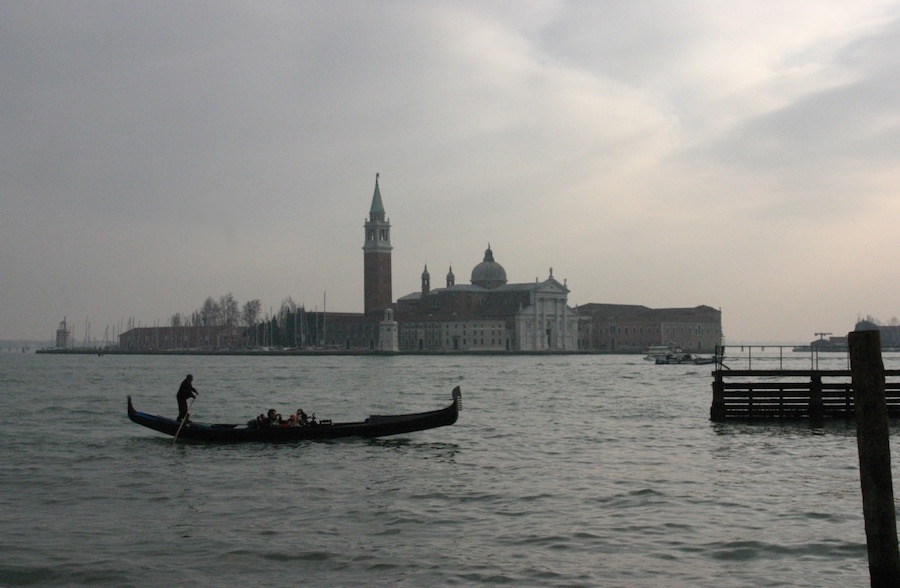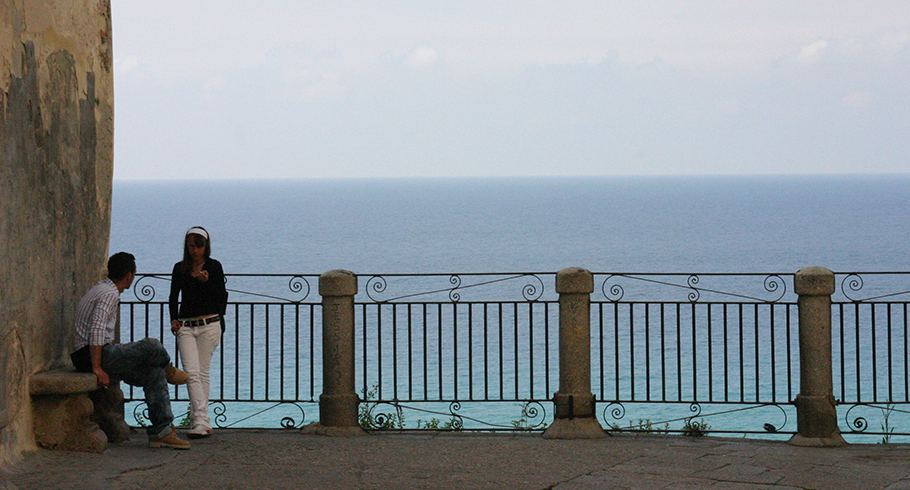Say ‘Adagietto’ and many people will say: ‘Death in Venice’.
This piece of music by Gustav Mahler is for many synonymous with the soundtrack of a film by Luchino Visconti, set in Venice. Even among those who’ll say ‘Ada-What?’, there are many who’ll know the music anyway. It is nearly too beautiful not to have heard it before.
As it is such a gem, many orchestra’s and directors desire to have a go at it. That is tricky, though. Not only because of its difficulty, but also because very good renderings already exist that can be intimidating.
I toyed with the idea of hearing as many of them as I could find, and then compiling my personal Top Three, commenting on each of them. When you limit the search to YouTube, though, not only do three excellent versions come automatically to the fore by mere popularity, but even more striking are the commentaries by earlier viewers. It appears that the magnificence of this piece brings out the most striking entries in You Tube’s ‘guest book’.
Normally, guest books tend to show entries as rich as ‘Wow!’, ‘Awesome!’, ‘Thank you‘ or ‘Never again!’ But the Adagietto tends to delve deeper into people’s hearts, to the extent that I prefer to let a few of them speak here too, limiting myself to the following.
‘Adagietto‘ is Italian. It means ‘somewhat adagio‘. Adagio is made up of ‘ad agio‘, at ease. So, it says: ‘Take your time, director’, but not to the extent to make it lento, slow. Adagietto, ‘a little adagio’, must by consequence be even a touch faster than adagio.
It comes as a surprise, then, that Mahler comes up with an instruction in German about how his Adagietto is to be played: ‘Sehr langsam‘, meaning ‘Very slow’. That seems to be contradictory, unless you would translate Adagietto as ‘a short adagio-piece’. (Not that this Adagietto is really short).
Anyway, you tend to take the instruction in his own language as the one that must have precedence. Still, that leaves the director with the choice of how to interpret ‘very slow’. In choosing, he can be limited by his orchestra. I guess that the slower you have to play, the more difficult it is, so that only the best orchestras can play the slowest.
No surprise, then, that two of the three renderings that YouTube’s algorithms come up with are by the Berlin Philharmonic. A good one, directed by Simon Rattle, and a famous one by Herbert von Karajan. The third is played by the Vienna Philharmonic, conducted by Leonard Bernstein.
BERNSTEIN (click to watch)
Jenny Nessel
This song is the one of the only things that has helped me with my anxiety. It has saved me from so much, and means more to me than many will ever know.
maestrfranz777
La migliore esecuzione che abbia mai sentito. Finalmente un musicista che non ha paura della lentezza, dei respiri, dell’indugiare sulle note per fartele assaporare tutte quante, come gocce di un prezioso e irripetibile distillato. Grande!
(The best rendering I have ever heard. Finally a musician who is not afraid of slowness, of rests, of lingering on the notes to savour all of them as drops of a precious and unsurpassable distillate.)
Chuck Carlson
Just a month after my wife passed away, my house was ravaged by the Thomas Fire. Friends and family were wonderful, but in the hard, long moments alone, this masterful performance led the list of comforting companions available to me.
Sophy Eaton (adapted)
I love watching the conductor’s arms and face… it’s like he is not only guiding them but expressing the music with his very body. He’s immersed into the piece, and I would be too. It’s absolutely stunning.
Paul Mesler
As beautiful as a first kiss, and just as passionate.
eoselan7
Bernstein does not cut off the final chord…He very gently allows his hand and baton to descend slowly downward, allowing the orchestra to continue their decrescendo, ever quieter and quieter until the sound seems to simply disappear into silence.
Michael Simonds
As with several of Mahler’s symphonies, number 5 can be a life-changing experience. Bernstein brought it to that level.
Chiara Pasin
Sembra fare l’amore con la musica. Con gli occhi chiusi. Sottovoce.
(He seems to make love with the music. Eyes closed. Whispering).

KARAJAN (click to watch)
matsfreedom
The older I get, the less time I have to waste. At the end of a hard day, I sit and listen to music like this, knowing I’m not wasting time.
Gerardo Coluccini
Gustav Mahler was in love with Alma Schindler, the woman who would have become his wife (“The most beautiful girl in Vienna”). He keeps from declaring his love, so, one day, he composes this music and sends her the score, without even adding a word. She sits at the piano, plays the music, and answers: “Now you should come here.” I think it can be considered the most beautiful love declaration of all time.
Lisa Gross
my god how I loved reading the comments of the lucky humans whose souls were touched indelibly by this sublime beauty.
jacksondavisTV
Dear Lord please warn me 11 minutes and 53 seconds before I die so I can put this on.
Mike Fuller (adapted)
When this music, the 4th Movement, Adagio from Mahler’s ‘5th Symphony’ was chosen for the film ‘Death In Venice’, a member of the film team who was impressed with the music asked who this music is by, someone said Gustav Mahler, the American guy replied “Can we hire him?” Gustav Mahler (1860 -1911)
My comment:
Nice story. Even when, as far as I know, the film crew was all-Italian, except for one Brit who was unlikely to have said such a thing.
Delaram
“Don’t bother looking at the view ,, I have already composed it ” ~ Gustav Mahler
Isaiahdlee
My orchestra conductor is retiring this year and we played this for our last piece. She broke down and I did too.
James Barclay
Takes all the worlds hatred away …. utterly wonderful.
Theresa Griffin Kennedy
This piece is just so painfully exquisite. I listened to it every day while I was writing an essay about my first love who hanged himself in 2016 at the age of 50, depressed and unable to come out of it.
Julee Felts
A positive historical note: this gorgeous piece was intended not as a slow sad funeral march, but as a faster tempo love song for Mahler’s then-betrothed, soon-to-be-wife, Alma, despite the sehr langsam indictations. The original tempo was designated between 7 or 7.5 minutes (or you could set youtube setting here to 1.5x playback speed) for the whole movement. The popularization of it as a funeral dirge following the death of Mahler-admirer Bernstein cemented the slower tempi performances of this piece, as well as its usage in the film “Death in Venice”.
(I tried this speed-suggestion, but Herbie & Lenny do it better)

BESIDES
– I’ve seen Bernstein conduct only once, in Amsterdam.
He was a great man and a great showman. A beautiful showman. I watched him, from not far, right in the face. There were cameras and microphones all over the place.
At the end of the concert, Leonard stepped down from the rostrum. To do what? To kiss Dutch concert master Herman Krebbers, who seemed nearly to fall off the stage, clearly more used to conductor’s handshakes than kisses.
The next day the same concert was performed again, and a friend who attended Concert No.2 reported that Lenny kissed Krebbers again.
What is more, when the audience was leaving, people were begged to return to their seats. Something was still not quite right with the registration of the final part.
They did it once more and Lenny kissed poor, or lucky?, Herman a third time!
(By then, though, Krebbers had become a hardened, or softened?, male-kiss-receiver).
– Someone who once met the great American maestro, told me that Leonard said to him:
‘The good thing about conducting a concert is that I can’t smoke for two hours’.
– Bernstein was buried with the score of Mahler’s Fifth Symphony, of which the Adagietto is a part, across his heart.

